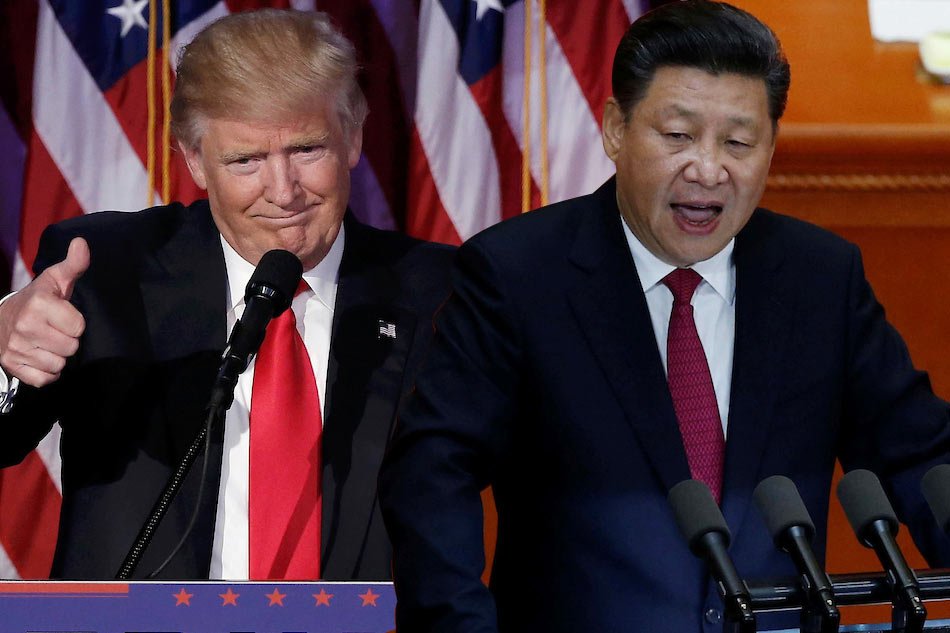A fragile trade truce between the United States and China, barely two weeks old, is already teetering on the brink of collapse after President Donald Trump accused Beijing of “totally violating” their recent agreement. China swiftly hit back, not by directly addressing Trump’s specific claims, but by reiterating its strong condemnation of U.S. “discriminatory restrictions,” particularly on critical semiconductor technology, suggesting the blame lies elsewhere.
The fresh escalation began on Friday when President Trump, in a post on Truth Social, declared, “The bad news is that China, perhaps not surprisingly to some, HAS TOTALLY VIOLATED ITS AGREEMENT WITH US. So much for being Mr. NICE GUY!” He did not elaborate on which part of the May 12 Geneva deal had been breached. However, U.S. Trade Representative Jamieson Greer later clarified, telling CNBC that while China had reciprocated by reducing tariffs, it was “slow-rolling” its compliance on other non-tariff barriers, including blacklisting U.S. companies and restricting rare earth exports – materials crucial for defense and technology industries.
“The United States did exactly what it was supposed to do,” Greer asserted. “The Chinese are slow-rolling their compliance which is completely unacceptable and has to be addressed.” Treasury Secretary Scott Bessent also indicated that talks were “a bit stalled” and suggested a direct call between Trump and Chinese President Xi Jinping might be necessary to break the impasse.
China’s response, delivered by Liu Pengyu, spokesperson for the Chinese embassy in Washington, focused squarely on U.S. actions. Without directly refuting Trump’s allegations, Pengyu urged the U.S. to “immediately correct its erroneous actions, cease discriminatory restrictions against China, and jointly uphold the consensus reached at the high-level talks in Geneva.” He highlighted that China had “repeatedly raised concerns with the US regarding its abuse of export control measures in the semiconductor sector and other related practices.”

This pushback from Beijing points to an ongoing point of contention: the Trump administration’s aggressive crackdown on China’s access to advanced technology, particularly AI chips. Just this week, the U.S. banned imports and use of AI chips from Huawei and issued directives to chip design firms to halt sales to China. Nvidia, a key player in the sector, has stated that restrictions on its custom-built H20 chip could cost it up to $8 billion in lost sales this quarter.
The May 12 Geneva agreement had offered a temporary reprieve in the long-running trade war, with both sides agreeing to suspend a significant portion of reciprocal tariffs for 90 days. The U.S. reduced additional tariffs on Chinese imports from 145% to 30%, while China lowered its retaliatory duties from 125% to 10%. This truce, however, did not apply to levies on cars, steel, aluminum, or those linked to U.S. accusations about China’s role in the illicit drug trade.
Markets reacted nervously to the renewed verbal sparring. The Dow fell, and the Nasdaq slid, as investors weighed the risk of a full-blown return to escalating tariff warfare. The uncertainty is compounded by a separate legal battle in the U.S., where a federal trade court recently ruled that Trump had exceeded his authority in imposing sweeping tariffs, a decision that was temporarily reinstated on appeal by the White House.
As the 90-day truce period progresses, the exchange of accusations underscores the deep-seated mistrust and fundamental disagreements that continue to plague U.S.-China trade relations. The prospect of President Trump and President Xi Jinping stepping in for direct talks remains a possibility, but for now, the delicate balance achieved in Geneva appears increasingly precarious, threatening to unravel the fragile peace in the global trade arena.
